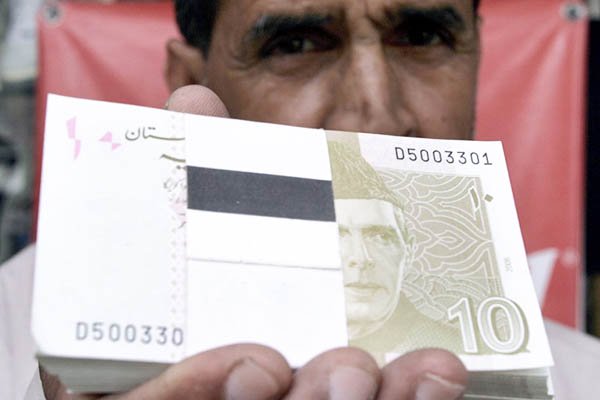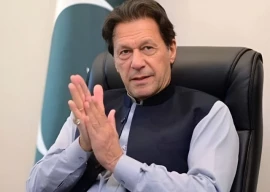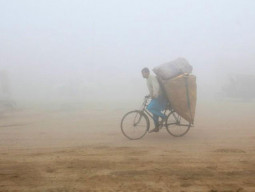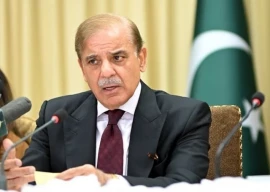
Contrary to its promise of tabling a ‘tax-free’ budget, the government has levied at least three new taxes. The new measures will result in a surge in prices of stationery, milk, construction material, cars and insurance premiums, and will further squeeze people’s take-home incomes.
In its bid to achieve a tax collection target of Rs3.621 trillion in 2016-17, the government proposed Rs160 billion additional taxes in the new budget. However, this figure is grossly understated, as the single measure of limiting tax-free cash withdrawal of up to Rs50,000 daily from banks to a single account will generate billions of rupees of additional revenue, which the government has not calculated in additional tax measures.
This will be the most aggressive measure after the levy of 0.6% withholding tax (WHT) on all banking transactions, as non-filers were avoiding levy by opening more than one bank account. The tax exemption on withdrawal of cash of up to Rs50,000 and the same amount of tax-free banking transactions have been proposed to be lined with one CNIC, said Federal Board of Revenue Chairman Mohammad Nisar Khan. Another aggressive measure, which may trigger protests, is the decision to charge 1% minimum tax on Rs10 million annual sales, lowering it from the Rs50 million threshold.
Income tax
The standard corporate income tax rate excluding for banks has been reduced to 30% from 31%. The additional 4% super tax on all banks and 3% on other companies and individuals having annual income of over Rs500 million to raise money for TDPs has been extended for another year.
The government has proposed a separate block for charging tax on property income to facilitate persons deriving income from renting property, including widows and senior citizens. Rental income of up to Rs200,000 will be exempt and income up to Rs2 million will be taxed in slabs of 5%, 10% and 15%. Income above Rs2 million will be taxed at 20%.
The government has proposed advance tax for alternate corporate tax to raise Rs16 billion. To raise another Rs14 billion, the government has proposed charging a minimum 1% tax from companies declaring gross losses.
To collect about Rs3 billion, the government has proposed to introduce separate capital gains tax (CGT) on income earned from trading securities at stock market by non-filers. It has proposed to extend the taxable limit from four to five years and introduced higher tax rates of 18%, 16% and 11% for holding period of up to one, two and five years respectively.

To raise another Rs3 billion, the government has proposed to charge 10% flat CGT on disposal of immovable properties. It has also proposed to change the rate of WHT for providing or rendering services by print and electronic media from 1% to 2%. The government has proposed that people registered with provincial sales tax authorities, should pay 3% advance tax while filing sales tax returns with provincial revenue authorities. It has proposed to double WHT rate on transfer of property. It is proposed to increase the rate in case of sale of property from 0.5% and 1% to 1% and 2% for filers and non-filers respectively and in case of purchase of property, from 1% and 2% to 2% and 4% for filers and non-filers respectively.
A new WHT at the rate 5% has been proposed on extraction of minerals. It is proposed that the rate of tax on dividend in the case of non-filers may be increased from 17.5% to 20%. The government has proposed that the rate of WHT for commercial bills up to Rs20,000 per month is increased from 10% to 12%. Yet another new tax of 3% on lease of vehicles has been levied to raise Rs4.5 billion. It is proposed to increase the WHT rate for non-filers from 15% to 20% on winning of prize bonds.
Sales tax and FED
The government has withdrawn 16% federal excise duty (FED) on certain services such as advertisement on CCTV/cable TV, shipping agents, banking companies, insurance companies, cooperative financing societies, Modarbas, Musharikas, franchise services, stevedores, stock brokers, forex dealers as provinces are already charging sales tax on these services.
One of the most aggressive measures was abolition of zero-rated status of stationery items. The government has also dropped a white bomb on milk consumers by withdrawing zero rated status of milk and fat-filled milk. The government has slapped Rs1 per kg FED on cement.
It has increased the rate of sales tax on import of mobile phones. The existing sales tax rates of Rs500 will be doubled to Rs1,000 and Rs1,000 per set rate will be increased to Rs1,500 for medium and high category mobile .
Rates of FED on cigarettes have been proposed to be increased to 23 paisa per cigarette for lower tier cigarettes and about 55 paisa per cigarette for higher tier cigarettes to raise Rs15 billion. FED on aerated waters is increased from 10.5% to 11.5%. The government has also imposed 2% sales tax on first-tier retailers. The sales tax on certain ingredients of poultry feed have been doubled to 10%.
Customs duty
The government has proposed to abolish 5% customs duty slab to reduce the tariff slabs from five to four under an IMF condition. The four new general slabs will be 3%, 11%, 16% and 20%. The 5% duty slab has been merged into 3%, which will lower customs duty rates on 2,300 kinds of raw materials. However, to neutralise the revenue impact, the government has increased the 10% slab rate to 11% and 15% to 16%, which will increase prices of over 1,400 semi-finished and finished goods.
Published in The Express Tribune, June 4th, 2016.

1732569774-0/Baymax-(2)1732569774-0-165x106.webp)















COMMENTS
Comments are moderated and generally will be posted if they are on-topic and not abusive.
For more information, please see our Comments FAQ